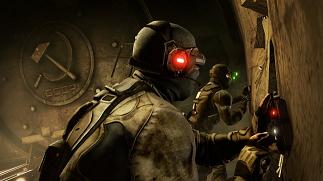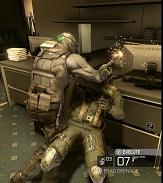 2010 FIFA World Cup marking an improvement over FIFA 10, the Wii version doesn’t fare so well. In fact, this title is so similar to the year’s main game that it’s going to take the most dedicated of football fans to pick it up on Nintendo’s console. Against EA’s best efforts, what we have here is largely a rehash of FIFA 10, sprinkled under a World Cup skin.
2010 FIFA World Cup marking an improvement over FIFA 10, the Wii version doesn’t fare so well. In fact, this title is so similar to the year’s main game that it’s going to take the most dedicated of football fans to pick it up on Nintendo’s console. Against EA’s best efforts, what we have here is largely a rehash of FIFA 10, sprinkled under a World Cup skin.
Regrettably, this Wii title suffers from the limitations of the hardware. The other consoles provide a visual upgrade that’s hugely welcomed for the series, and a number of on-pitch tweaks that make it a worthwhile release. This kind of experimentation and step forward is lacking here, as there are very few improvements to get excited about.
Aside from the normal World Cup modes, the most interesting addition to the series is ‘Zakumi’s Dream Team.’ Here, players will start with a team comprised of unknown international players coming from the world’s least renowned football nations. Whether it’s a right back from Rwanda, or a goal-scoring hero from the Cape Verde Islands, the premise is to complete challenges and to earn players for your squad. You’re pitted against international teams every match, and come with three objectives that determine the quality of the player you can choose as your prize. Only complete the bronze challenge and you’ll only be able to pick a bronze rated player. Complete two challenges and silver also become available. If, however, you have the skill to overcome all three tasks, you’ll be able to pick any player from the opposing side to join your up-and-coming team.
While this section forces players to adapt their style of play, it’s the only new addition that we would like to have seen in the HD console versions. Working hard to unlock a big-name player for your team certainly pays off, as their quality and added ability helps take control against the tougher nations. Other than this, there aren’t enough modes to keep players coming back, especially if they’re invested into a league season on FIFA 10.
Rather predictably, 2010 FIFA World Cup is aimed towards the ridiculous on the Wii. Each game features a number of wonder goals, be it 30-yard strikes, amazing bicycle kicks or cheeky chips from just outside the area. Personal battles are still fought all over the pitch as you’re forced to time your headers correctly, shaking your arm when the ball glows. Similarly, set-pieces also require expert timing in order for you to be successful, both offensively and on the defensive side. The best feature is still the slow-motion when a battle could go either way. Witnessing the opponent just managing to slide long enough to block your shot adds tension to the game, as the ball bounces clear or bobbles away ready for the next match-up. Once in the box, you’ll also be treated to a close-up of your striker unleashing a thunderbolt towards goal, as the camera darts behind him in order to make you feel part of the action. These features are no doubt what outlines the Wii version from the rest, although they’re not going to add much to the life of someone who’s already picked up EA’s main offering this year.
Another section this version of 2010 FIFA World Cup also lacks in is it’s online play. Although players can compete against three friends in a ‘last man standing’ competition, it’s not a patch on what’s available on the other consoles. Admittedly, this is aimed towards the younger generation, but when you can compete in a number of modes with up to 31 other teams on the PS3 and 360, it’s difficult not to feel short changed here. It seems the only longevity this version has is with it’s Dream Team mode, as the rest of the package screams of EA cashing in on the license; something that isn’t true for alternative versions.
On a console that managed to get FIFA 10 so right for it’s audience, there’s a huge sense of disappointment here. Even the most avid of footballing youngsters will be sure the changes are minimal, and will be let down by the lack of new ideas. If you have to pick up one World Cup game this year, we recommend you look elsewhere.



